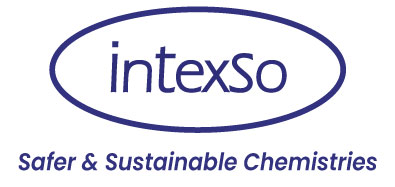Introduction
As the world grapples with the pressing issue of climate change, innovative solutions are emerging from unexpected corners. One such solution is the concept of “blue carbon.” This term, which might sound novel to many, represents a powerful tool in the fight against global warming. Alongside this is the equally important idea of blue carbon credits, a market-driven approach to carbon sequestration. In this blog, we will explore what blue carbon is, how it works, and the role blue carbon credits play in promoting sustainable environmental practices.
What is Blue Carbon?
Blue carbon refers to the carbon captured by the world’s oceanic and coastal ecosystems. These include mangroves, seagrasses, and salt marshes. Unlike terrestrial forests, which capture carbon in trees and soil, these marine environments store carbon in both their vegetation and the sediment beneath them. Blue carbon ecosystems are incredibly efficient at sequestering carbon, often outperforming their terrestrial counterparts on a per-area basis.
Types of Blue Carbon Ecosystems
- Mangroves: These coastal forests are known for their complex root systems that stabilize shorelines and protect against erosion. Mangroves can store up to four times more carbon than terrestrial forests.
- Seagrasses: Found in shallow waters, seagrasses form underwater meadows that capture and store carbon while providing critical habitats for marine life.
- Salt Marshes: These coastal wetlands trap sediments and organic matter, creating rich, carbon-dense soils.
Importance of Blue Carbon
The significance of blue carbon lies in its dual role in climate mitigation and ecosystem protection. By sequestering carbon dioxide from the atmosphere, blue carbon ecosystems help to mitigate the effects of climate change. Moreover, these ecosystems provide numerous co-benefits:
- Biodiversity: They support a wide range of marine species, contributing to biodiversity.
- Coastal Protection: They act as natural barriers against storms and coastal erosion.
- Livelihoods: Many communities depend on these ecosystems for fishing, tourism, and other economic activities.
Threats to Blue Carbon Ecosystems
Despite their importance, blue carbon ecosystems are under threat from human activities. Coastal development, pollution, and climate change itself pose significant risks. Destruction of these habitats not only releases stored carbon back into the atmosphere but also diminishes their capacity to capture future emissions.
Blue Carbon Credits: Monetizing Conservation
To incentivize the preservation and restoration of blue carbon ecosystems, the concept of blue carbon credits has been developed. Similar to carbon credits in terrestrial contexts, blue carbon credits are tradable certificates that represent the capture or avoidance of one metric ton of CO2 equivalent. These credits can be sold in carbon markets, providing financial rewards for conservation efforts.
How Blue Carbon Credits Work
- Assessment: Projects are assessed to determine the potential amount of carbon they can sequester.
- Verification: Independent bodies verify the carbon sequestration claims to ensure credibility.
- Certification: Verified projects receive certification and generate blue carbon credits.
- Trading: Credits are sold in carbon markets to companies and organizations aiming to offset their emissions.
Benefits of Blue Carbon Credits
- Economic Incentives: Provide funding for conservation and restoration projects.
- Corporate Responsibility: Allow businesses to meet sustainability goals by offsetting their carbon footprint.
- Global Impact: Contribute to global efforts to reduce greenhouse gas concentrations.
Case Studies and Success Stories
Several initiatives worldwide are demonstrating the potential of blue carbon projects:
- Mikoko Pamoja, Kenya: This community-led project protects and restores mangroves, generating blue carbon credits that fund local development and conservation.
- Vanga Blue Forest, Kenya: Focuses on mangrove restoration, offering a sustainable model for blue carbon credit generation.
- Indonesian Blue Carbon Initiative: A large-scale effort to restore and protect mangroves across the Indonesian archipelago, one of the world’s largest mangrove ecosystems.
Here are the examples of blue carbon initiatives in India:
- Mangrove Restoration in Gujarat
- Integrated Mangrove Fishery Farming System (IMFFS) in Tamil Nadu
- Sundarbans Mangrove Restoration
- Andaman and Nicobar Islands Mangrove Conservation
- Maharashtra Mangrove Cell Initiative
Challenges and the Way Forward
While promising, the blue carbon market faces several challenges:
- Measurement and Verification: Ensuring accurate and reliable measurement of carbon sequestration can be complex.
- Market Development: The blue carbon credit market is still emerging and requires more participants and standardized frameworks.
- Regulatory Support: Stronger policies and international agreements are needed to support blue carbon initiatives.
To overcome these challenges, collaboration between governments, private sectors, and non-governmental organizations is crucial. Increased investment in scientific research to improve measurement techniques and the establishment of robust regulatory frameworks can help scale up blue carbon projects.
Conclusion
Blue carbon represents a significant opportunity in the global fight against climate change. By understanding and harnessing the power of coastal and marine ecosystems, we can enhance carbon sequestration, protect biodiversity, and support sustainable development. Blue carbon credits offer a promising path to monetize these efforts, driving investment and encouraging global participation. As we move forward, embracing blue carbon strategies will be essential in building a resilient and sustainable future.

